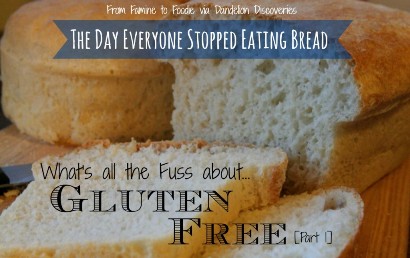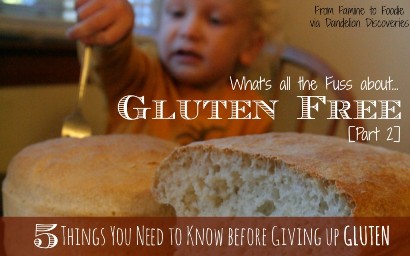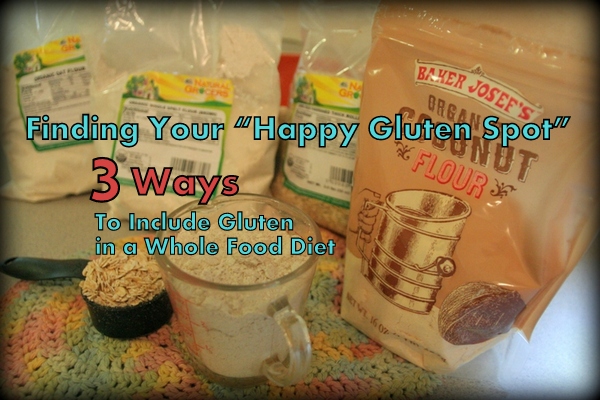Finding Your “Happy Gluten Spot” – 3 Ways to Include Gluten in a Whole Food Diet {With Recipes!}
The Nature of Rest
What the Bible and Creation Teach Us About Sabbath Living
Intentional Parenting
Nature Studies
Apologetics
Adventure
Free Resource
Entrepreneurship
Homeschooling
Faith
Books
Categories
Master Naturalist, Bible teacher, author, wife, and mama of four! Join our adventures of discovering God while adventuring in creation.
I'm Eryn
Hey there!
Listen Now
Order now
[one_half]
[one_half_last]
Last week I had the privilege of writing 2 guests posts over at Dandelion Discoveries for my friend, Biz.
She asked me to share what I have learned over the past two years concerning the Gluten Free Movement in whole food eating, and whether or not I believe it is a fad, or true.
Please begin with these posts, as they will set the groundwork for what I want to share with you today. And that is the discoveries I have made—through extensive research and tons of taste testing—in how to incorporate gluten and grains into a whole food diet!
{Part 1} What’s All The Fuss About Gluten Free? {The Day Everyone Stopped Eating Bread}
{Part 2} 5 Things You Need To Know Before Giving Up Gluten
Have Your Gluten and Eat it Too! {Just Choose Wisely….}
Last week I explained how, even though modern food industry had good intentions, the modifications they have made to wheat within the past 50 years have wreaked havoc on our bodies. That is why so many people are beginning to have digestive issues when they eat foods that contain wheat–this is also where gluten gets a poor reputation. (Read more here)
However, even in light of the information I covered last week, I believe that throwing out grains and gluten all together is (except in cases of extreme intolerance) completely unnecessary.
I compare it to other nutritional fads brought on by exhortations to avoid certain foods completely, such as when nutritionists and doctors told everyone to stop eating eggs. Or butter. Or meat.
Years later we now understand that eggs, when they come from free-range chickens, are one of the healthiest foods we can eat. And butter and meat from grass-fed or pastured cows are an incredible source of minerals, nutrients, and healthful fats.
The “Middle Ground of Gluten”
I find the same is true with grains. Modern industry has modified them and made them unhealthy, even toxic to our bodies. But there is a middle ground; there are some exceptions that make allowances for us to include grains and gluten in a whole food diet.
Yes—we have our work cut out for us, modern food industry has made sure of that, but with some research, time, and effort, we can find a healthy balance of gluten and grains in our diet.
3 Ways to Include Gluten in a Whole Food Diet
Over the past two years of researching, experimenting, and taste-testing with different flours and methods for preparing wheat, my family has settled on 3 wholesome ways to include gluten in our whole food diet:
Spelt flour, Sourdough fermentation, and Oats.

{1} For The Love of Spelt!
When wheat went through its tragic transformation 50 years ago, a couple of grains escaped the travesty—spelt and kamut.
Although I have yet to experiment with kamut flour, we have transitioned to using spelt flour in most of our recipes that call for flour. We love it for making homemade banana bread, cookies, waffles, pizza, muffins, pasta, tortillas, Pannekoeken (Dutch baby pancakes), and almost anything else we would previously have used white flour for.
It acts much like white flour in baking, but has none of the unhealthy modifications of wheat. It is also much more affordable than most specialty flours. We buy ours for $1.50/lb from a natural grocer. Search for organic whole brown spelt flour.
Start Here: Dark Chocolate Chunk Cookies, made with spelt flour!

{2} Sourdough – My Bubbly Science Experiment
Walk into my kitchen on any given day and you may notice a faint sour smell emanating from my kitchen shelf. Follow your nose and it will lead you to a glass jar with beige, bubbly substance within it. I introduce you to my sourdough starter.
Sourdough is an ancient preparation of wheat that involves souring wheat through active live yeast and bacteria. I know—appetizing….but hang in there with me. It is super simple, and extremely nutritious.
Once you have a sourdough starter, all you do is “feed” it every day with a mixture of flour and water, then it is at your disposal for making outstandingly delicious sourdough foods.
The natural fermentation process actually breaks down gluten, so for those who are looking to just cut down on gluten and eat a low-gluten diet, this is a good option. Especially if you feed your sourdough starter with spelt, an unmodified grain.
Click here for more information on getting started with sourdough!
Start Here: Low-Gluten Sourdough Pancakes!

{3} Oats! The Versatile Low {or No} Gluten Option!
I was surprised recently to learn that oats are naturally gluten-free—this was news to me, and good news! However, oats are usually grown next to wheat fields, or processed on the same equipment as wheat. Because of this they are often contaminated with a trace amount of gluten from wheat.
There are gluten-free oats that have been protected from contamination of gluten, but they are much pricier than your regular old oats.
If you are just looking to cut back on gluten, there is no need to pay the extra hefty price tag only to avoid a trace amount of gluten—reach for regular oats, but make sure they are high-quality organic oats. We are also just beginning to experiment with oat flour as a low-gluten option in our pantry.
Click here to read more about oat flour
Start Here: Low-Gluten Oat and Blueberry Pancakes!
For Those with Celiac – Going Gluten-Free
If you have Celiac Disease (A Sever Intolerance to Gluten), then yes—going gluten-free is your best option, and I would encourage you to begin learning how to make gluten-free foods at home from scratch rather than falling prey to expensive, highly processed store-bought versions.
Start Here: Gluten-Free, Sugar-Free, Omega-3-Packed “Pancakes”
You can also begin experimenting with gluten-free flours such as coconut flour or almond flour, and gluten-free grains such as brown, wild, or black rice, as well as quinoa (which is actually a seed, read more here).
Finding Your Own “Happy Gluten Spot”
It has taken me over two years to come to a comfortable and confident understanding of wheat and gluten, and with that knowledge to settle on what is best for me and my own family.
Wherever you are in your own whole food journey, I simply beg of you to not jump on the Gluten-Free Bandwagon simply because someone (or 20 someones) tells you that gluten is terrible for you.
Like every other area of your health, it is your responsibility to research your options, listen to your own body, and find a healthy balance of what is best for you. And, also like every other area of your diet, understand that this will take time–it is a journey, embrace it as such!
So go forth and find your “Happy Gluten Spot”.
learn more
Raising kids stirs something deep in our souls — an innate knowing that our time is finite. Taking my kids outside in creation, I’m discovering how to stretch our time and pack it to the brim with meaning. God’s creativity provides the riches of resources for teaching the next generation who He is and how He loves us. Join our adventure and discover inspiration and resources for refusing rush, creating habits of rest, living intentionally, and making the most of this beautiful life!
I'm Eryn, Master Naturalist, Author, & Bible Teacher
Hey there!
Receive free inspirational resources for refusing rush, creating habits of rest, parenting with intentionality, and teaching our kids who God is through what He has made!
Inspired
Be
Brand + Website by Amarie Lael Design | TERMS & CONDITIONS + PRIVACY POLICY | Copyright 2011 - 2025 Eryn Lynum
Contact
Speaking & media
About
Books
Shop
Videos & Interviews
Email List
Stories
Free Downloads
Resources
Home
@erynlynumauthor
The Nature of Rest
What the Bible and Creation Teach Us About Sabbath Living
Now Available!
Order
X
Signed Copy



I am so excited about all 3 these things you shared! Spelt flour is completely new to me. I can’t wait to try it. Do you do a straight substitution of spelt flour for wheat flour? Any suggestions on where I should get it in the Milwaukee area?
And sourdough!! My new love. I’ve been buying sourdough bread and have an empty jar for starter sitting on my counter, but I guess I’ve been a little intimidated to actually start the starter! Today is the day.
Thanks for all of your work on these posts and for sharing them at Dandelion Discoveries! It was so fun to work with you.
Thanks Biz! It was really great to work with you too 😀 Yes I do a straight substitute spelt flour for whole wheat. It works great for most things. Bread–not so much, I can;t seem to make a good loaf of bread with spelt–yet. If you figure it out, let me know 😉
Perhaps give Good Harvest in Pewaukee a call, I bet they have spelt. Avoid buying it packaged, it will be a lot more expensive. It is cheaper if you can find someone selling it from bulk bins. And keep it in the freezer as it is a whole grain, and will spoil quicker on the shelf. Hope that helps! And good luck with the sourdough!!
Hi Eryn!Thanks for the info and tips! I love your take on gluten and how to incorporate it into your diet. Now that I finally have my own kitchen again I can’t wait to start trying this out!
Thank you Susan! I wish I could see your kitchen! I am so excited for you guys and your new home 😀 Hopefully we will get to see it sometime during a visit 😉
I made your Sourdough Pancakes this morning and they turned out great! I loved that it takes 2 cups of starter, because I just HATED the thought of throwing out any of it, so making this recipe is a great way to reduce my starter without wasting any! Question for you… in your recipe you say “recently fed” starter. How recently? Like do you feed it right before you use it? Or the day before? Also, do you keep your starter on your counter all the time or in the fridge and then pull it out and feed it before you use it? I’m trying to figure out WHAT NOW with my bubbly science experiment 🙂
Hi Biz! I am so sorry–I meant to reply to this a long time ago! I’m so glad the pancakes turned out well! “Recently fed” means within the past half hour or so 🙂 So I usually feed the starter right when I wake up, wait a half hour, then make the batter. I’m sure it’d be fine if it was longer, I just think it works best when the yeast is very active.
I keep my starter on the shelf and feed it daily, if I know I’ll use it more than a couple of times a week. Otherwise, if we’re going on vacation, or don’t plan on using it for a while, I let it “rest” in the fridge. I also let it rest in the fridge for a day or so every few weeks to give it a break.